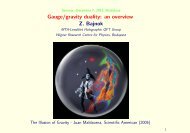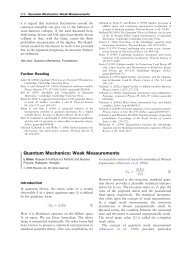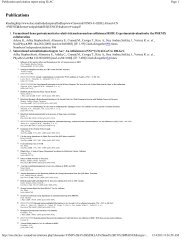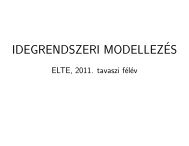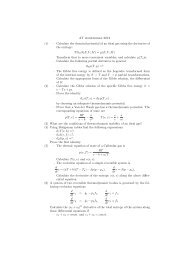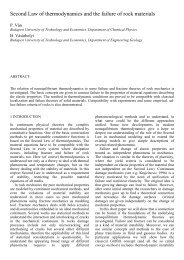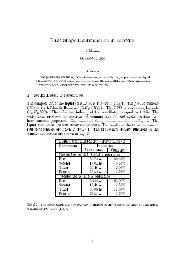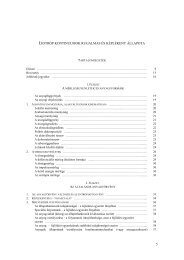Lecture Notes in Advanced Thermodynamics
Lecture Notes in Advanced Thermodynamics
Lecture Notes in Advanced Thermodynamics
You also want an ePaper? Increase the reach of your titles
YUMPU automatically turns print PDFs into web optimized ePapers that Google loves.
Example: ideal gas<br />
– the well-known equations of the ideal gas (R is the gas constant and c<br />
is the isochoric specific heat, they are real constants):<br />
E = cMT ;<br />
pV = MRT<br />
– from that the state functions are:<br />
T (E, V, M) = E<br />
cM<br />
p(E, V, M) = MRT<br />
V<br />
= RE<br />
cV<br />
– let us choose the chemical potential function as:<br />
µ(E, V, M) = c ln E M + R ln V M<br />
– for these functions an appropriate entropy function:<br />
S(E, V, M) = Mc ln E M + MR ln V M<br />
+ M(c + R)<br />
– it can be easily checked that for c > 0 this entropy function fulfils<br />
properties (P 1 ), (P 2 ) and (P 3 ), for prov<strong>in</strong>g the validity of (P 4 ) a longer<br />
calculation is required<br />
2.1.3 Important relations from the model<br />
Gibbs relation<br />
– the total differential of the entropy function (d can be imag<strong>in</strong>ed as a<br />
very small change <strong>in</strong> the quantity)<br />
dS = ∂S<br />
∂E ∣ dE + ∂S<br />
V,M<br />
∂V ∣ dV + ∂S<br />
E,M<br />
∂M ∣ dM<br />
E,V<br />
– us<strong>in</strong>g the (P 1 ) property:<br />
dS = 1 T dE + p T dV − µ dM (5)<br />
T<br />
– after rearrang<strong>in</strong>g the Gibbs relation is obta<strong>in</strong>ed:<br />
dE = T dS − pdV + µdM (6)<br />
6



